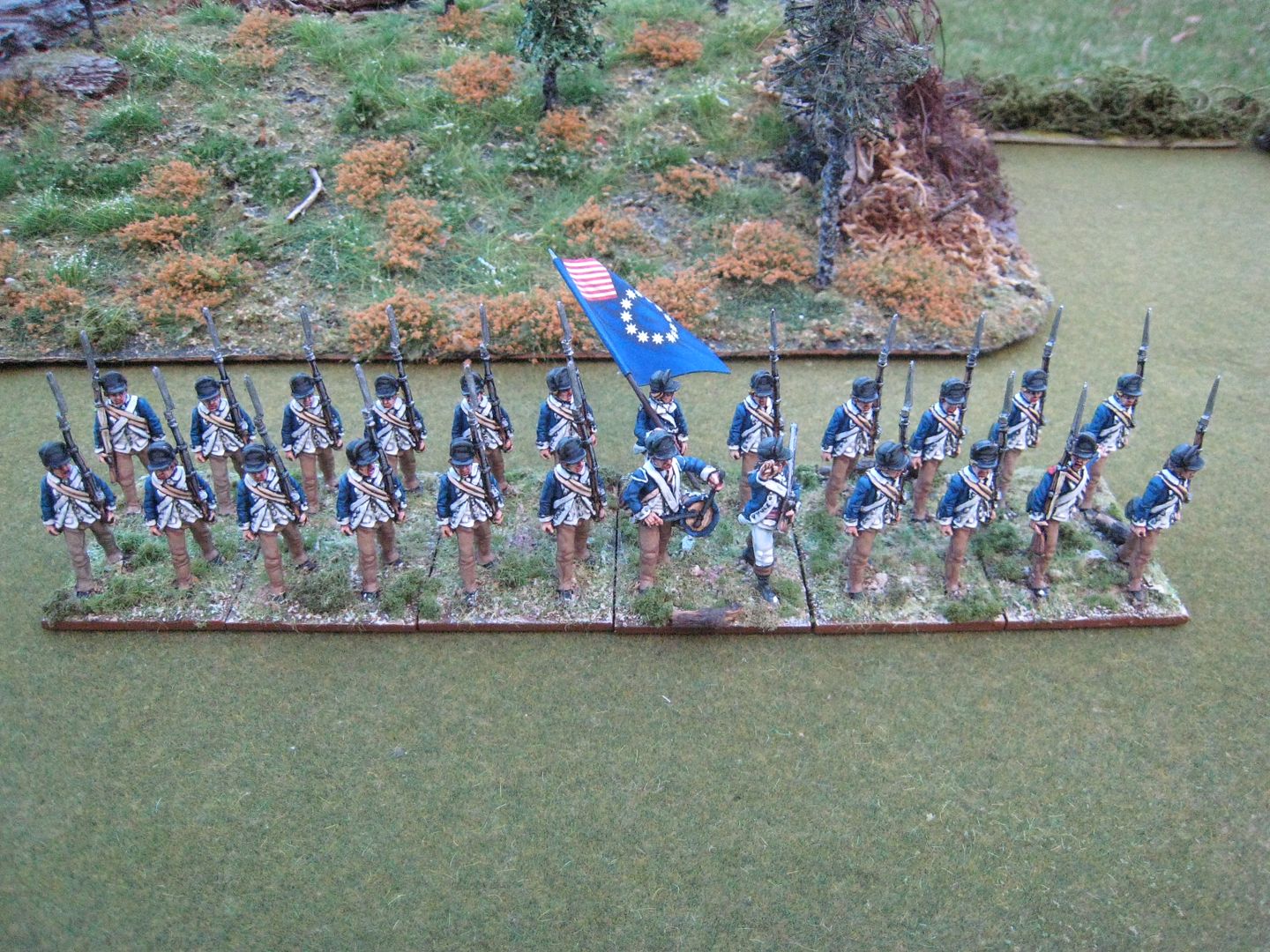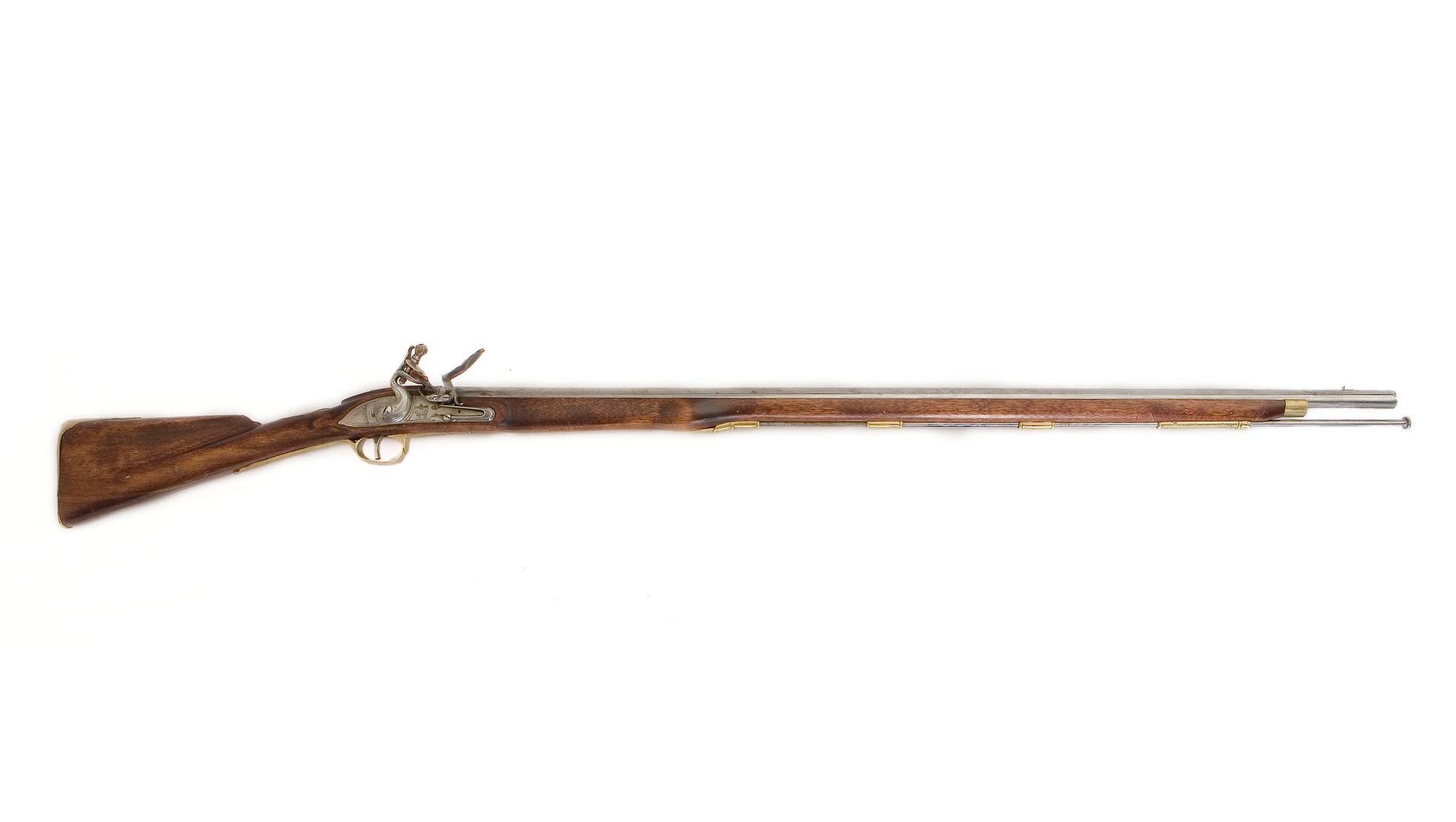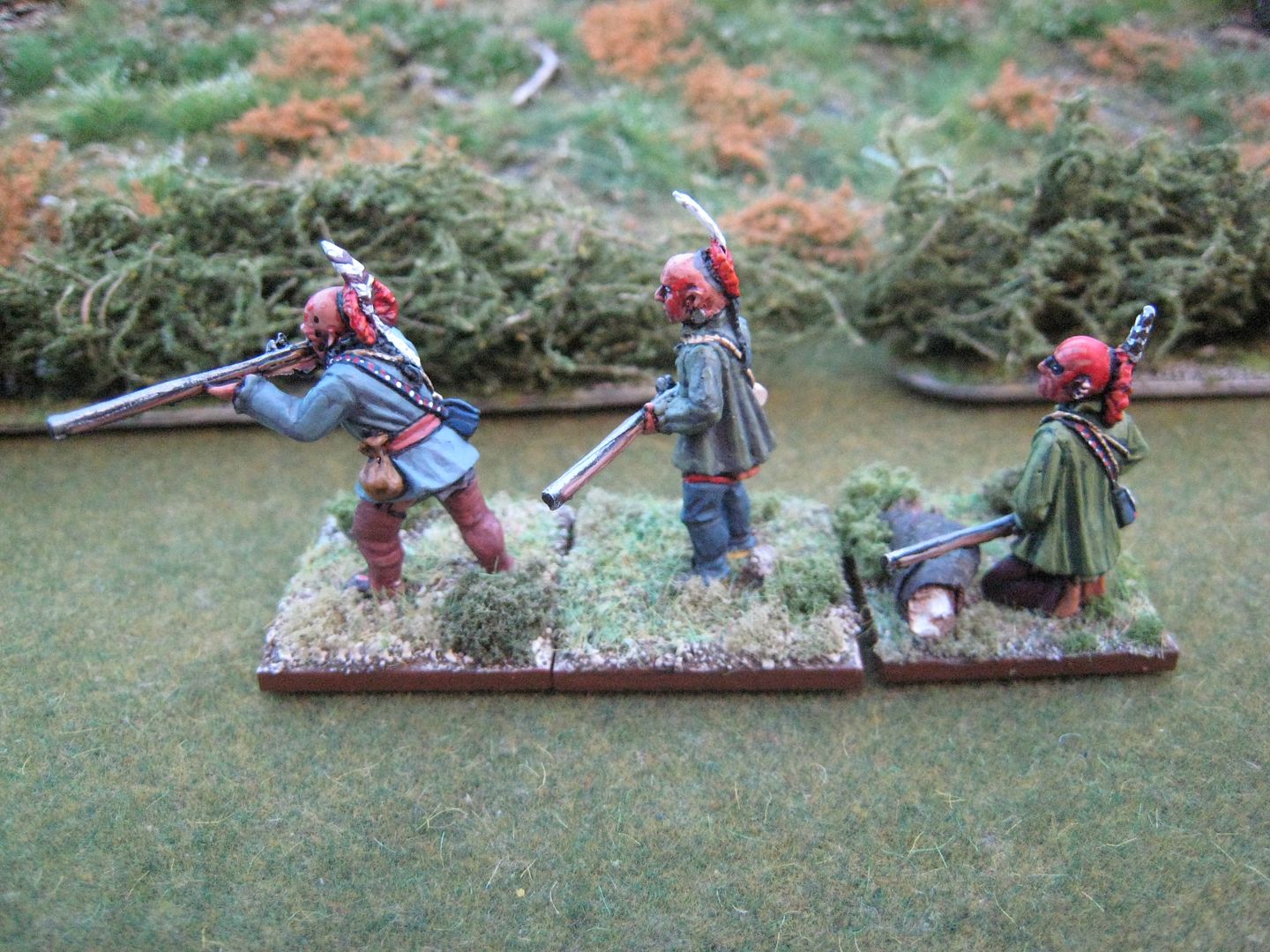The 5th Pennsylvania Regiment had its origins in the 4th Pennsylvania Battalion, which was raised in early 1776 with Anthony Wayne as its Colonel. A year later, the enlistments of the men who had joined this unit expired, but many of them joined the newly-raised 5th Pennsylvania Regiment. The regiment was engaged throughout the campaigns in the northern theatre - Brandywine, Germantown, Monmouth and Stony Point. At some point, the regiment was transferred to the south, as it fought at Green Spring in July 1781 during the Yorktown campaign. The regiment was disbanded on 1 January 1783. It appears in the following "British Grenadier!" scenarios: Brandywine (18 figures), Germantown (18), Whitemarsh (16) and Monmouth (24 - this is described in the scenario as a composite of various Pennsylvania units).
This regiment uses the figures from Perry packs AW172-173, "American infantry in peaked caps". The box of plastic Continental infantry contains peaked caps, although those have a feather behind the front. The majority of figures in the plastic set are in breeches, so if you want to have a regiment of infantry in caps and overalls, you'll need to use these metal packs. Research suggested various possibilities for regiments wearing caps, such as Henley's Additional (which I already have, albeit in tricornes). I decided on the 5th Pennsylvania largely because I don't have many Pennsylvania regiments and I liked the blue faced white colour scheme of this regiment. I'll admit to finding the figures rather fiddly to paint. In particular, I couldn't work out the straps on the reverse of the figures. If you look at the photo opposite, you can see that the bread bags have large straps - I'm pretty sure I've painted two straps as one, but I'm just not sure what the underneath strap is for (the bayonet?).
Also, I was initially wary of the bands around the muskets - the vast majority of American figures in the Perry AWI don't have bands and I wondered whether this was an anachronistic mistake. However, the answer is probably that these are supposed to be French-supplied Charleville muskets, which did have bands on them during this period (as indeed can be seen on the Perry French figures). Apparently the "Brown Bess" was fairly unique in not having bands, and Dutch and German muskets had them as well as French ones (hat-tip to Brendan Morrissey for this information). The Charleville musket was first introduced in 1717 and the design was revised several times before the musket was replaced by percussion lock types in the 1840s. The muskets supplied to the Continental Army were mainly older models from the 1760s. The newer Model 1777 was used by French troops during the AWI and this was the standard model used in the Revolutionary and Napoleonic Wars.
The French Charleville musket
A replica second 1769 Short Land Pattern "Brown Bess" musket
The flag is by GMB and is a loose one that I found in my flag box without any identification. I couldn't place it, but my pal Bill Nevins tracked it down as the "Easton Flag". Legend has it that the flag was first displayed in July 1776 for the first reading of the Declaration of Independence in Easton, Northampton County in Pennsylvania. However, it seems more likely that this flag was used by local militia during the War of 1812. With a circle of gold stars it's very similar to the flag of the European Union, but I think it looks ok for this regiment, as the colours match and so much the better if it has some connection with Pennsylvania. It's from GMB pack WIA43. I'm not all that keen on the pose of the standard bearer, although I understand that this is the way flags were usually carried on the march. With this finished unit, I've now painted at least one of all the American infantry packs released by Perry Miniatures - there are 29, in case you're wondering!
24 figures. Painted July-September 2016. Flag by GMB.























